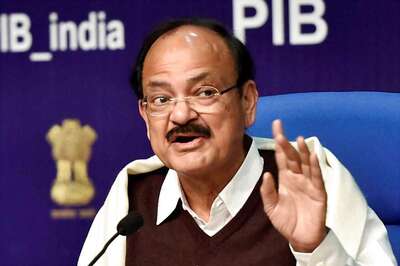
views
Two things happened twenty years ago. Manmohan Singh was brought from Geneva’s economic think-tank South Centre and appointed finance minister in a deal forced upon India by the International Monetary Fund (IMF) when the agency was approached to bail the nation out of its debt crisis. Singh supervised the transition of India from a socialist-democracy to a capitalist market economy, a process often referred to as liberalization-globalization. Two decades later, the man heads the Union government and is called by the corporate media as the best Prime Minister India has seen since Nehru (although the man they would actually like to see at 7, Race Course is Hindutva icon Narendra Modi. Refer to the public endorsements by Ratan Tata and Sunil Bharti Mittal). But more on that later.
Something else - equally if not more profound - happened in 1991. In the General elections, the Bharatiya Janata Party (BJP) secured 120 seats. The rise of the right-wing party from just 2 seats in the 1984 elections to the Indian political mainstream is largely attributed to the communally divisive Ram Mandir movement which was the party’s biggest election plank in 1991. Less than two years later, on Dec 6 1992, the Babri Masjid at Ayodhya was demolished. 18 years since the incident, there has been no closure to one of India’s most violent movements and the temple still remains BJP’s principal political ambition.
It would be naïve to look at the 1991 economic reforms and the emergence of Hindutva as two isolated and unrelated phenomenon. There is, as we shall see, a fundamental and organic synergy between the two. In fact, it can be argued that neo-liberalism facilitated the rise and impact of Hindutva on national social life in an unprecedented manner, just like other right-wing movements facilitated capitalism globally. Examples: Margaret Thatcher’s ‘reforms’ in Britain, Ronald Reagan in the US or the Latin American dictatorships actively supported by the US.
Let’s look at the semantics first. Hindutva presents itself as a ‘nationalist’ force. Seen in the backdrop of the more ‘sectionalist’ and ‘vested’ Mandal and regional movements of the 80s, the notion of a nationalist movement immediately caught the imagination of the youths. Moreover, Hindutva also presented itself as a ‘modern’ movement. The realization of a Hindu India was also a sign of India’s modernity. The NDA’s ‘India Shining’ campaign of 2004 was a reflection of both – India was ‘shining’ because it was ‘growing’ as well as becoming Hindu (at least in their perception). In fact, it is not an accident that the same terms that political Hindutva used – ‘awakening’, ‘resurgence’, ‘new-found confidence’ – are the terms that the champions of neo-liberal India use today to describe India post-1991.
Now the strategy. It is not difficult to see how Hindutva affects labour and class movements. The emphasis on a religio-cultural identity obfuscates class relations and struggle in the society. That explains why the neo-liberal model discouraged labour unions in the industries and instead supported cultural uniformity.
That also explains why while there may be serious ideological differences between a more centrist Congress and the right-wing BJP on pluralism and citizenship, there is hardly any fathomable difference between the two on the economic front. In fact, the six years of NDA regime at the centre (1998-2004) saw ‘crony’ capitalism at its most ruthless with the creation of a ministry of divestment selling PSUs and inviting foreign capital.
Take two contemporary examples. It’s not an accident that India’s most communally polarized state, Gujarat, is also the most preferred by the native and multinational companies. The public endorsement of Narendra Modi as the best leader to lead the nation by Tata, Mittal et al is more than just business; it’s also a reflection of the tactical symbiosis between fascism and capitalism. Or Chhattisgarh, the state where economic consensus between the Congress and the BJP (to the extent of creating Salwa Judum together, now banned by the SC) and their patronage by the corporates has resulted in creating the mineral-rich state a hot-bed of tribal revolt and Maoist ‘insurgency’.
Many would argue that it is pointless to raise the Hindutva bogey in the ‘new’, globalized India. That India is looking ahead now and the dream of a Hindu Nation is a political nightmare for the Sangh Parivar. It is naïve to think so, since the only condition that capitalism needs –and creates – to thrive is political conservatism. The success of Hindutva – making itself invisible and almost impossible to locate outside political affiliation – has been its mutation into a more modern notion of ‘secular’ citizenship, endorsed across the mainstream political spectrum as well as by capital.
(The writer is Editor, News Features, at ibnlive.com)




















Comments
0 comment